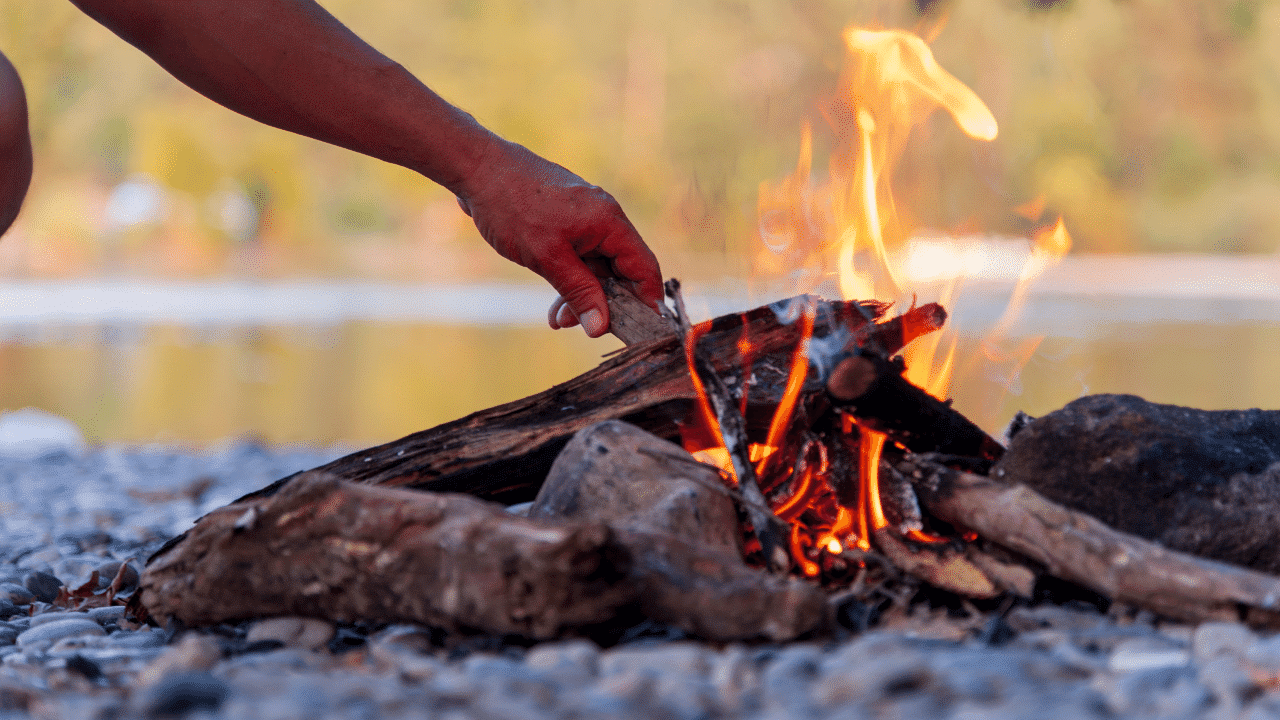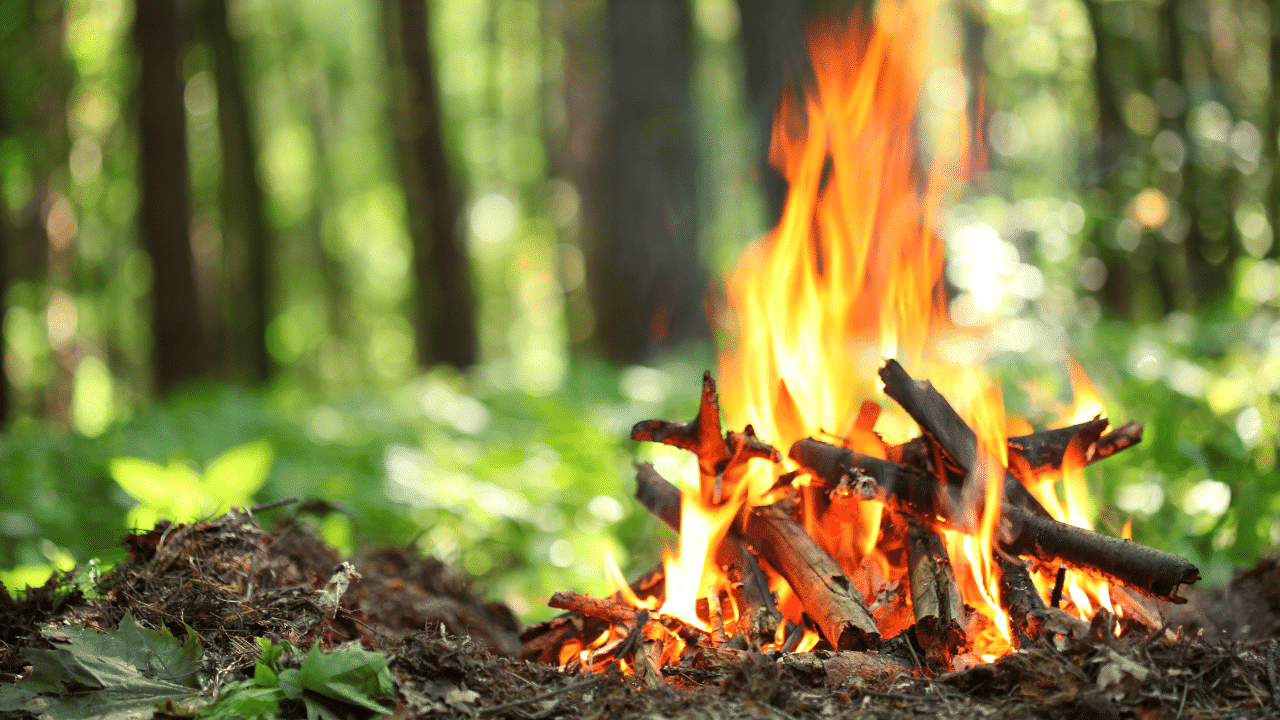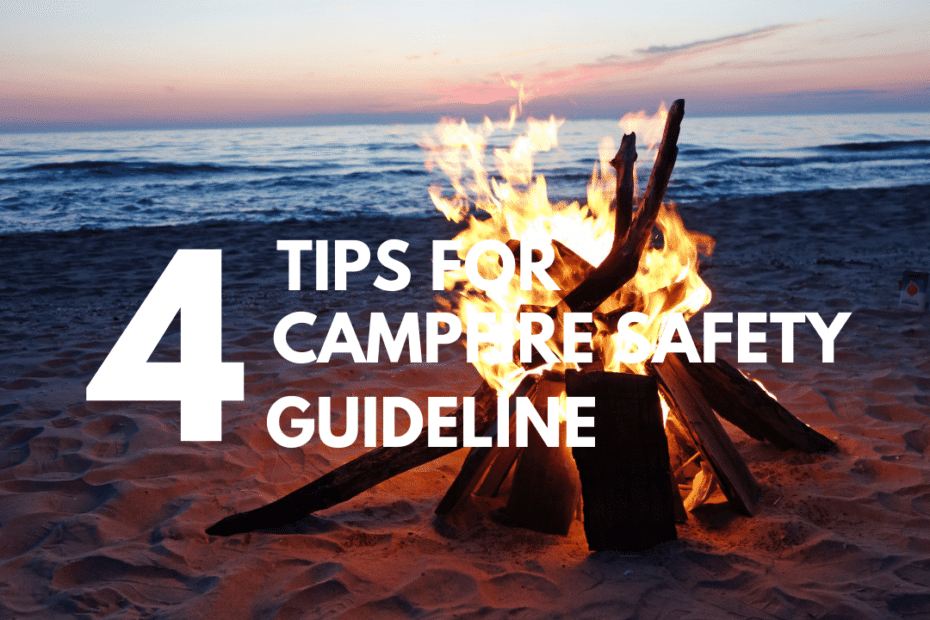Camping is a wonderful opportunity to connect with nature and spend quality time with loved ones. One of the most cherished aspects of camping is gathering around a campfire, sharing stories, and relishing each other’s company. However, it’s crucial to remember that campfires can be hazardous if not handled with proper safety measures in mind. In fact, careless fire management can lead to forest fires and severe injuries. This article aims to provide an in-depth overview of campfire safety guidelines that every camper should be familiar with.
A Detailed Overview of Campfire Safety Guidelines
To ensure a safe and enjoyable camping experience, it is essential to follow these four guidelines:
- Preparing for a Campfire: Begin by selecting a safe location, clearing the area around the fire pit, and gathering necessary tools and materials.
- Building and Starting the Fire: Choose appropriate firewood and create a proper fire structure.
- Maintaining and Controlling the Fire: Add wood safely and maintain a vigilant watch over the flames.
- Extinguishing the Fire: Prepare adequately before extinguishing the fire and ensure all embers are thoroughly watered down.
Let’s delve into each of these guidelines in more detail.
1. Preparing for a Campfire
While camping is a thrilling experience, practicing campfire safety is crucial to prevent accidents that can spoil the trip. Preparing for a campfire should be approached with great care. This involves selecting a safe location, clearing the area around the fire pit, and gathering the necessary tools and materials.
Choosing a Safe Location
Carefully choose the location for your campfire. It should be at least 15 feet away from tents, trees, or bushes, as these materials are highly flammable. Additionally, select a flat area covered with bare soil or gravel to reduce the risk of fire spreading. Ensure you are not starting a fire on private property or in restricted areas where fires are not allowed due to drought conditions, high wildfire danger, or local regulations. Before starting your fire, check with park rangers or forest officials regarding any restrictions in place.
Clearing the Area around the Fire Pit
Clearing an adequate area around your fire pit helps minimize the chances of accidental fires spreading uncontrollably. Remove any grass, leaves, twigs, and other combustible materials within a 10-foot radius of your pit. If possible, dig a shallow pit surrounded by rocks to contain the flames. Keep flammable materials such as lighter fluid, matches, and paper at least 20 feet away from the fire pit to prevent accidental ignition.
Gathering Necessary Tools and Materials
Before lighting your campfire, gather all the necessary tools such as a long-handled shovel for moving coals, a bucket of water for emergencies, a first aid kit in case of injuries, and leather gloves for handling hot objects. These items will enable you to have better control over the fire if needed. Additionally, gather ample amounts of firewood from a legal source nearby. Dry wood that has been lying on the ground or has dead branches is preferable, as it burns more easily compared to green, wet wood, which is harder to ignite. Avoid using treated or painted wood, as it releases harmful chemicals when burned, posing health risks. Following these guidelines ensures a safe and enjoyable camping experience for all.
2. Building and Starting the Fire
Using Appropriate Firewood
When building a campfire, it is crucial to use the right type of wood. Softwoods like pine or spruce may be easy to ignite, but they burn quickly and can produce sparks. Hardwoods like oak or maple burn longer and hotter, making them ideal for cooking over the fire. It is also important to use dry wood that has been seasoned for at least six months, as green wood produces excessive smoke and burns poorly.
Creating a Proper Fire Structure
After selecting the appropriate wood, it’s time to build a proper fire structure. Begin by building a small pyramid shape with kindling in the center of your fire pit area. Arrange small pieces of dry kindling around it, allowing easy airflow. Add larger pieces of wood in a crisscross pattern on top of this base layer until you have enough fuel for your needs.
Lighting the Fire Safely
Once the structure is prepared, you can safely light your campfire. Use waterproof matches or reliable ignition sources like lighters. Begin by lighting one corner of the pyramid to avoid smothering the flames. As the kindling catches fire, gradually add more fuel, starting from smaller twigs and progressing to larger branches as necessary to maintain a consistent flame. Remember, while building campfires is enjoyable, safety should always be the top priority.

3. Maintaining and Controlling the Fire
Adding Wood to Maintain the Fire
A campfire provides warmth, light, and a sense of comfort during outdoor adventures. After building a fire, it is important to maintain it safely. Adding wood is a critical part of this process. Avoid adding large pieces of wood all at once, as it may result in excessively high and uncontrollable flames. Instead, add smaller pieces gradually as the previous ones burn down. This helps prevent excessive heat buildup and allows for better control. Choose appropriate firewood for maintaining a campfire. Dry wood collected in advance is preferable, as it burns more easily and efficiently. Green or wet wood tends to produce more smoke than heat, which can be harmful when inhaled over prolonged periods.
Keeping a Close Eye on the Flames
Once a campfire is lit, it must be closely monitored at all times. It is crucial to maintain a safe distance from the flames while ensuring they remain contained within the designated area. Strong winds or sudden gusts can cause flames to become uncontrollable and ignite surrounding trees or vegetation. It is important to watch out for any sparks or embers that may fly out of the fire pit. These can easily ignite nearby dry leaves or debris, leading to unexpected fires that are difficult to control.
Extinguishing any Embers or Sparks
Even with careful attention and proper maintenance, accidents can still occur around campfires. Promptly extinguishing any sparks or embers ensures the safety of everyone involved. The best method for extinguishing embers involves using water in addition to sand or dirt if available, as these materials cut off the oxygen supply. Sand or dirt also helps break up the embers, making them easier to douse with water. By maintaining a close watch over the flames, gradually adding small amounts of dry wood, and promptly extinguishing any sparks or embers, campers can safely enjoy their campfire experience without the risk of injury or damage to the surrounding environment.

4. Extinguishing the Fire
Fires can be beautiful, but if not handled properly, they can also be dangerous. Even after hours of enjoying a campfire, providing warmth, light, and cooked meals, it is crucial to properly extinguish the fire before leaving it unattended. Unattended fires pose a threat to the environment and future campers who may unknowingly encounter hot embers or start fires too close to old ashes. Properly extinguishing the fire ensures that no remaining embers or sparks can reignite and cause further damage.
Preparing to Extinguish the Fire
Before extinguishing the fire, ensure that everyone in your group is aware that it is time to put out the flames. Gather all necessary materials, including water, shovels, and sand, ahead of time so you don’t need to leave the pit unattended while searching for them later. Place the materials within easy reach of everyone so that if someone needs assistance, others can help without moving far from their designated area. It is important that nobody leaves until everything is completely safe.
Watering Down Embers, Coals, and Ashes
To extinguish the fire effectively, pour water over all visible embers. Ensure that every ember has turned black before moving on, as any burning material left can reignite when exposed to air. The coals will produce steam when watered down, indicating that you have successfully extinguished any burning or glowing embers. After pouring water over all visible areas, check beneath the surface, as there may be hidden hotspots that need attention. Once you have thoroughly watered down the embers, cover them with soil or sand.
Cooling Down All Materials Before Leaving
After extinguishing the embers with water, allow all materials to cool down before leaving. Use a shovel to spread the ashes around and break them apart, promoting better airflow. This helps any hidden hotspots beneath the ashes to escape and be extinguished by water or other methods. Repeat the process of watering down until the ashes are completely soaked and incapable of starting a fire. Finally, cover every part of the pit with sand or soil, ensuring that no materials are exposed.
Campfire safety guidelines are essential for everyone who enjoys camping to ensure that fires remain safe and do not cause harm to people or the environment. Properly extinguishing campfires is just as important as enjoying them. When not done correctly, it can lead to further harm beyond the immediate surroundings of your campsite. Remember to always follow these guidelines when preparing for, starting, maintaining, and extinguishing any campfire. Enjoy your time in nature responsibly!
Conclusion
It is important to remember that campfires, while enjoyable, can be extremely dangerous if not handled properly. Every camper bears the responsibility of following these guidelines for their own safety and the safety of others. When camping with a group, communication of these guidelines is crucial, ensuring that everyone understands and adheres to them. By taking responsibility for your actions and being proactive in preventing accidents, you can have a safe and enjoyable camping experience.
